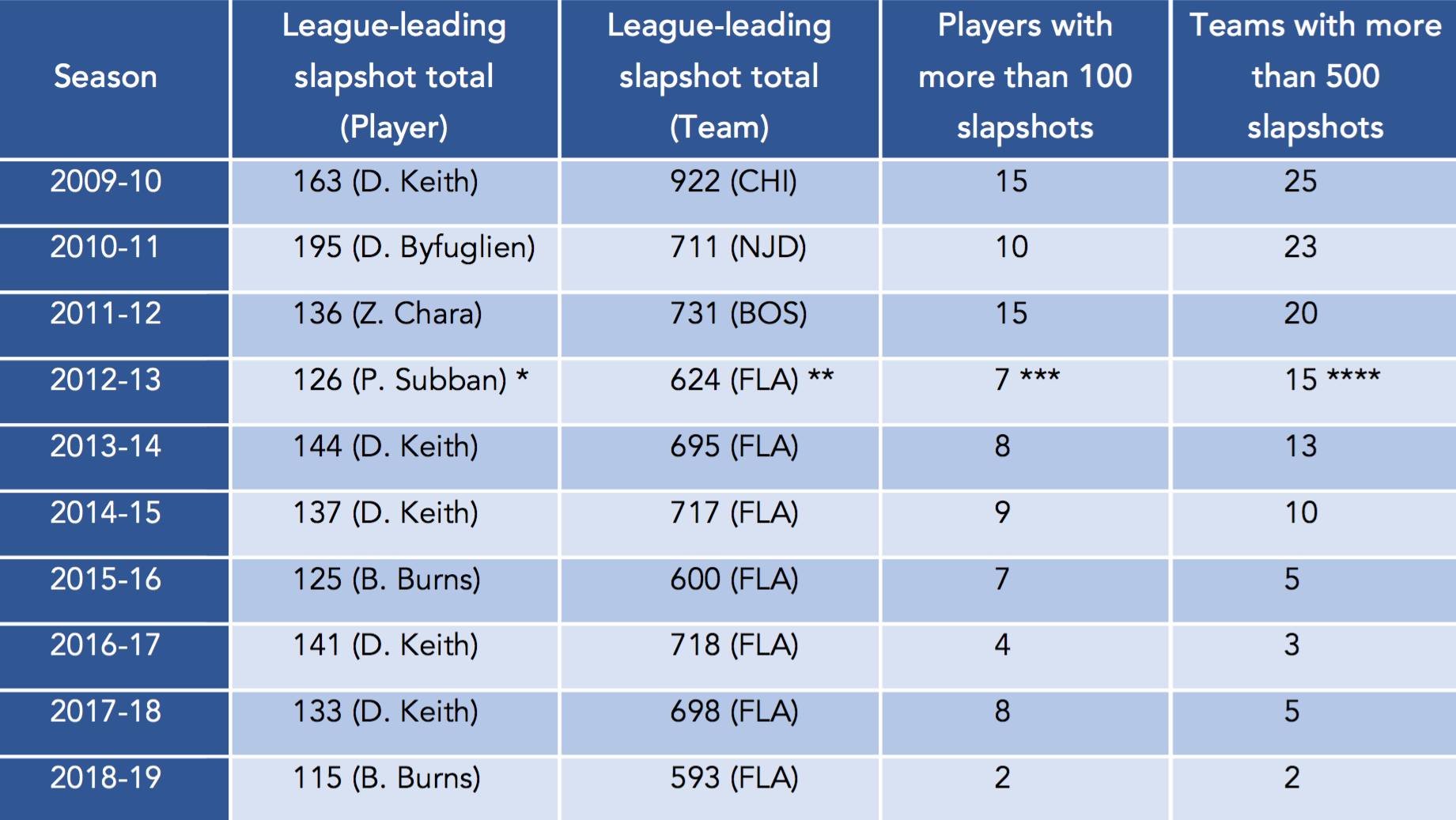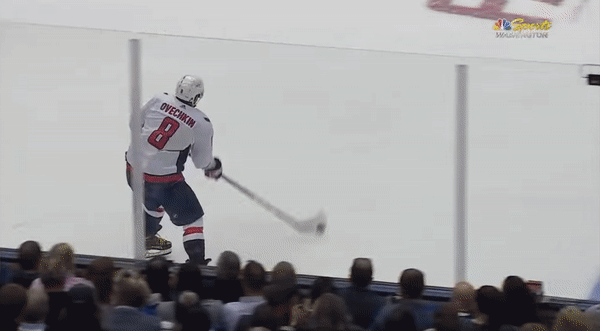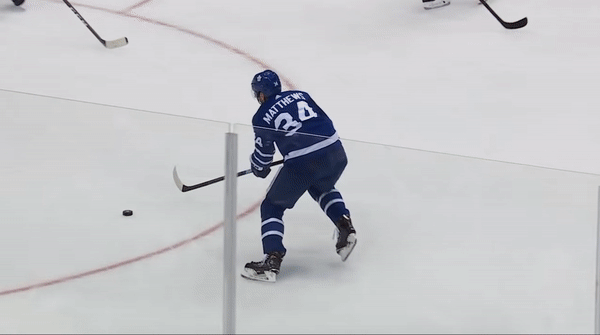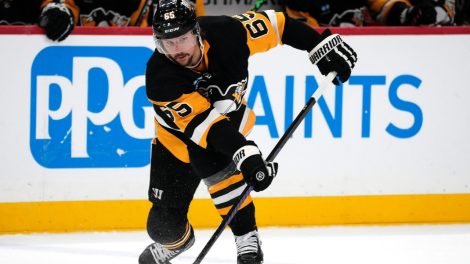TORONTO — Few aspects of the game seem as synonymous with NHL hockey as the slapshot, the clappers from the point that filled nets ruthlessly throughout the league’s foundational decades. But as the sport continues to get faster and the space once offered to shooters dries up, the slapshot is becoming a relic of the past.
The occasional howitzer still pops up in games here and there, with some veteran defenders hanging onto the slapshot dream, and some circumstances still allowing it to be effective. But by and large, the way the game is currently played often makes loading up a slapshot simply too cumbersome to be as effective as other options.
Dallas Stars defender John Klingberg offered his perspective on the decline of the technique’s presence during a recent conversation with Elliotte Friedman and Jeff Marek 31 Thoughts: The Podcast, shedding light on his thinking process when launching shots from the blue line in today’s NHL.
“You want to shoot the puck as hard as you can, but it’s tough nowadays to have time enough to shoot slapshots,” Klingberg told Friedman and Marek. “You want to have a quick and good release with your wrist shot. Nowadays, everyone is so good at tipping too, it doesn’t really matter if it’s going higher or lower. I’m just trying to score from there, too. And we have a lot of good guys who can tip pucks as well in Dallas, so for me, I’m just trying to get the puck through and score a goal.”
A quick glance at the numbers from the past decade bears out what Klingberg touched on, and what seems intuitively clear from watching games in 2019-20 — as the league skews faster, younger, and grounded more and more in dynamic skill, those booming slappers are indeed losing their place in the sport.

** Florida led with 365 slapshots over 48 games, which translates to roughly 624 over an 82-game season
*** Players above 59 slapshots over 48 games, which translates to roughly 100 slapshots over an 82-game season
**** Teams above 293 slapshots over 48 games, which translates to roughly 500 over an 82-game season
At the beginning of that timeline, 2009-10’s 30 NHL clubs combined for 17,481 total slapshots, which averaged out to roughly 583 per team. A decade later, last season’s clubs amassed just 11,612 — and that was with a 31st club added to the mix — for an average of just 375 slappers per team.
NHL shooting coach Tim Turk — who’s logged more than 20 years teaching the art of shooting to big-league mainstays like Victor Hedman, P.K. Subban, Mitch Marner and Brendan Gallagher, among a long list of others — echoed Klingberg’s thoughts on the impact of the increased speed in the game.
“If you’re going to do it well, you’re going to need time,” Turk says. “There’s a misconception between an actual slapshot and the one-timer … but you think about the old-school style of slapshot, where you’re gaining the zone, receiving a pass across the blue [line], just before or just after it, and you’re in motion — the old-school Rick Vaive-style shot. That is slowly leaving the game, because there’s just no time. [Coaches] are trying to bring in the on-the-tape, off-the-tape mentality, and you just don’t get time to load up as much anymore.”
The veteran coach believes there is still a place for slapshots in the game, provided the circumstances line up right. He pointed to Capitals defender John Carlson — who’s 23 points into a convincing Norris Trophy bid already — and the man-advantage slapper that earned him his second goal of the night during Washington’s recent win over the Toronto Maple Leafs.
“He had a lot of time, and he had a really good delay there — one of the things he did well when he scored that goal is he had his head up the whole time, he prepped the puck. And that can’t always happen in 5-on-5.”

Which is why the most useful place for slapshots in today’s NHL may be as a power-play specialty, when the game slows down and space opens up.
“It was a 5-on-3 situation, Carlson had 15-20 feet in front of him, and then there were cross-screens going on.” Of course, while Carlson’s goal clearly displays the benefit of the technique — the increased speed of the shot giving netminders little time to react to it — Turk says it’s key to remember its effectiveness was grounded in the space afforded by the man-advantage. “People see that, and they’ll [say], ‘I need to take slapshots,’ not understanding that he had all that time, and the situation.”
But the disappearance of the slapshot is the result of more than simply increased game speed and dwindling space out on the ice, Turk explains. As the overall skill level in the sport continues to increase at a rapid pace, so too do the number of mind games being played by both shooters and netminders, with both parties training daily to outsmart the other. Amid that back-and-forth, more reasons to move away from slappers have emerged.
“We’re trying to counter what the goalie coaches are teaching the goalies,” Turk says. “When there’s all this traffic in front and the goalies are trying to track the puck at the perimeter, they lose sight of it at times. But if they hear that snapping sound and think it’s a release — they hear a snapping sound, [like] the stick hitting the ice — they kind of get big naturally, even though they’re unsure of where the puck is released from or where it’s headed. They still get big.
“But if you don’t make any sound, if you take that ‘snap’ or ‘slap’ out of the shot and you kind of make it silent — I call it the ‘quick release silencer’ — then the goalies don’t get big, so the puck becomes more reactive in front of the net. If it doesn’t go in, it hits them and it produces more healthy of a rebound. So that’s why I kind of preach the quick-release shot, depending on where you are on the ice.”
As Klingberg said, the improved ability of the average player to tip and deflect pucks in front of the net also changes this dynamic, as the onus on blue-liners now is to get pucks through above all else, if not to score outright then to earn a deflection or second opportunity.
Also altering things as a result of that overall rising skill level are the different types of shot releases that have come into the game.
Take Auston Matthews, for example. In our look at the top stickhandlers in the league last year, stickhandling specialist Pavel Barber highlighted how Matthews’ puck-handling prowess ties into his signature shot: “That toe-drag release shot — you know, that’s a skill that you have to be very good with the toe and with good stickhandling to do, and he’s obviously perfected it,” Barber said at the time.
Turk pointed out another advanced aspect of Matthews’ shot — his deceptive leg movement and its ability to freeze defenders.
“That 34 in Toronto, he gets the D to stand up because he does what I call the ‘stride leg release delay,’” Turk explains. “He gets the stride leg out without the shot coming off with synchronicity or chain reaction. He throws the stride leg out and then, as the gap is closing, the D kind of stands up because he’s unsure of when the puck’s going to get released. And then [Matthews] pulls it inside and releases it.
“Whether it goes in, it always produces a healthy rebound. So, that’s another reason why I feel players are transitioning into quicker releases as opposed to the slapshot.”

Taking that all into account, it’s a fair bet Matthews is rarely flying into the zone thinking about loading up a slapshot, or spending much time considering it even when presented space around the perimeter. His slim total of 11 slappers last season — and just one of his 37 goals coming via slapshot — suggest as much. Looking around the league at other elite snipers in the game, only three of last season’s top 15 goal scorers — all above 38 goals on the year — saw slapshot goals contribute in double-digits to that total.
Throwbacks Alex Ovechkin and Steven Stamkos were among that trio, along with Nikita Kucherov. For the rest of that top-end group, slapshot goals accounted for between six and zero of those total goal sums.
While the disappearance of the slapshot seems a worthy trade-off given what the infusion of limitless skill has done for the game, the impact of that disappearance goes beyond just cause for nostalgia, according to Turk. The slapshot technique can also play a subtle role in improving a player’s overall shooting effectiveness through its impact on body positioning.
“There’s one main reason that I still teach slapshots — the most effective thing that a slapshot does to your other shots is it gets your body into what I call a ‘stride formation,'” Turk says. “If you take any type of loaded-position slapshot, as you’re releasing the puck, your right leg goes back like you’re taking a skating stride. So when that leg goes back, it sets your hip into a certain athletic position — when your hips follow your leg, they go back as well, and that means your shoulders and chest go forward.
“So, if I’m finding it challenging to fine-tune [a player] getting that stride formation back to help lower their posture, then I introduce the slapshot. Because when they take the slapshot they get low automatically, they don’t even realize what they’re doing. And then I just try to transition that slapshot formation, or their body formation, and instil it into their quick release.”
Though for younger players, who spend less time practising slapshots as part of their usual training, that body-positioning value may be going by the wayside, the evolution of the game has left shooters little choice in the matter. Today’s NHL is built for quick shots and second opportunities. And even Turk, who understands every aspect of the value of the slapshot in the right circumstances, knows which way he’s telling his defenders to lean if the opportunity presents itself.
“Whether they have the time or not, I’d rather they get it to the net a little quicker.”
[relatedlinks]








